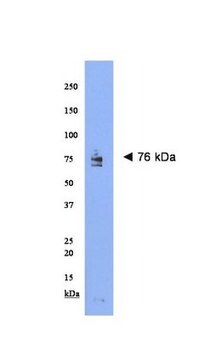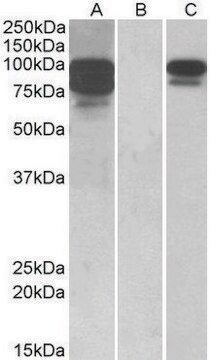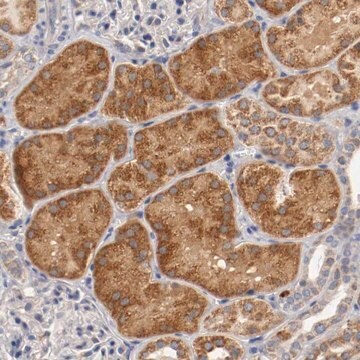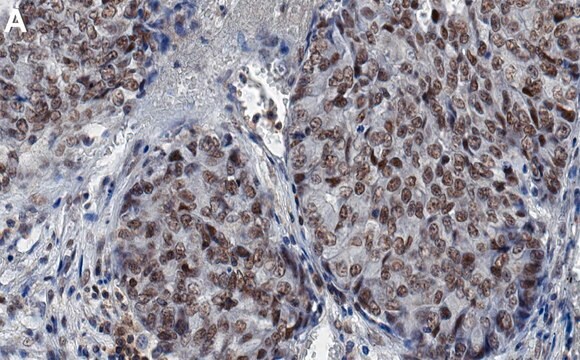MABS434
Anti-PCSK9 Antibody, clone 9B3.1
culture supernatant, clone 9B3.1, from mouse
Synonym(s):
Proprotein convertase subtilisin/kexin type 9, NARC-1, Neural apoptosis-regulated convertase 1, PC9, Proprotein convertase 9, Subtilisin/kexin-like protease PC9
About This Item
WB
western blot: suitable
Recommended Products
biological source
mouse
Quality Level
antibody form
culture supernatant
antibody product type
primary antibodies
clone
9B3.1, monoclonal
species reactivity
human
technique(s)
immunohistochemistry: suitable (paraffin)
western blot: suitable
isotype
IgG2aκ
NCBI accession no.
UniProt accession no.
shipped in
ambient
target post-translational modification
unmodified
Gene Information
human ... PCSK9(255738)
General description
Specificity
Immunogen
Application
Western Blotting Analysis: A 1:500 dilution from a representative lot detected NARC-1 (PCSK9) in 10 µg of human colon tumor tissue lysate.
Signaling
Quality
Western Blotting Analysis: A 1:500 dilution of this hybridoma culture supernatant detected NARC-1 (PCSK9) in 10 µg of SW480 human colon adenocarcinoma cell lysate.
Target description
Physical form
Storage and Stability
Handling Recommendations: Upon receipt and prior to removing the cap, centrifuge the vial and gently mix the solution. Aliquot into microcentrifuge tubes and store at -20°C. Avoid repeated freeze/thaw cycles, which may damage IgG and affect product performance.
Other Notes
Disclaimer
Not finding the right product?
Try our Product Selector Tool.
Storage Class Code
10 - Combustible liquids
WGK
WGK 2
Certificates of Analysis (COA)
Search for Certificates of Analysis (COA) by entering the products Lot/Batch Number. Lot and Batch Numbers can be found on a product’s label following the words ‘Lot’ or ‘Batch’.
Already Own This Product?
Find documentation for the products that you have recently purchased in the Document Library.
Our team of scientists has experience in all areas of research including Life Science, Material Science, Chemical Synthesis, Chromatography, Analytical and many others.
Contact Technical Service
![[KD Validated]Anti-PCSK9 Antibody, clone 9L4U5, Rabbit Monoclonal](/deepweb/assets/sigmaaldrich/product/images/287/260/cdc087a1-d8df-45f5-b520-65479f938aa1/640/cdc087a1-d8df-45f5-b520-65479f938aa1.jpg)







